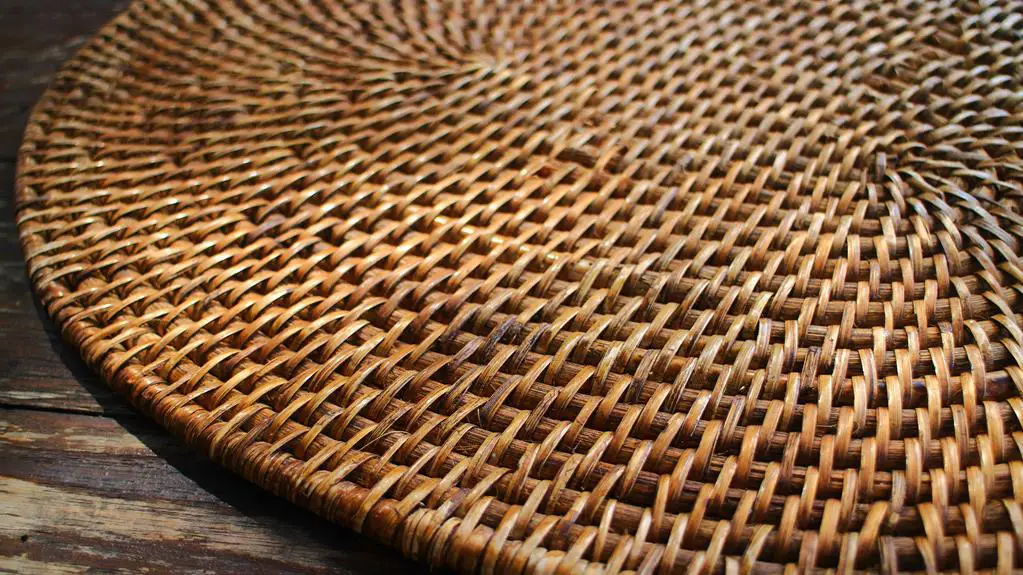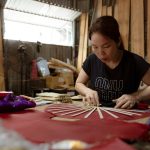When you think about sustainable textiles, bamboo fabric likely comes to mind, but do you really know what it is? This unique material, derived from the pulp of bamboo plants, boasts a range of appealing qualities, from its softness to its antibacterial properties. However, the production methods vary significantly, which can influence not only its eco-friendliness but also its overall appeal. As you explore the nuances of bamboo fabric, you might find yourself questioning its place in the world of sustainable fashion and whether it lives up to its reputation.
Table of Contents
Key Takeaways
- Bamboo fabric is a sustainable textile derived from bamboo plant pulp, known for its softness and natural sheen.
- It offers breathability and moisture-wicking properties, making it comfortable for both summer and winter wear.
- Bamboo fabric has natural antibacterial qualities, reducing odor and enhancing freshness.
- The production process can involve either mechanical or chemical methods, impacting environmental sustainability and fabric quality.
Understanding Bamboo Fabric
Bamboo fabric, made from the pulp of the bamboo plant, offers a sustainable and soft alternative to traditional textiles. You'll find that it's not only eco-friendly but also incredibly versatile. The natural properties of bamboo make it resistant to bacteria and odor, which means you can wear it comfortably without worrying about unpleasant smells.
When you choose bamboo fabric, you're opting for a breathable material that keeps you cool in the summer and warm in the winter. This adaptability makes it perfect for various clothing items, from activewear to sleepwear. Plus, its moisture-wicking ability ensures you stay dry during physical activities.
Another great aspect is its softness. You'll love how it feels against your skin—smooth and gentle, almost like silk. Bamboo fabric also has a natural sheen that adds an elegant touch to any garment.
In addition, bamboo is biodegradable, so when you decide to part with your items, you're contributing to a healthier planet. Overall, embracing bamboo fabric means you're making a choice that benefits both your wardrobe and the environment.
The Production Process
When it comes to bamboo fabric, understanding the production process is essential.
You'll want to explore the different harvesting techniques used to gather bamboo and the various methods employed to transform it into fabric.
Let's break down these key points for a clearer picture of how bamboo becomes the soft, sustainable material you love.
Bamboo Harvesting Techniques
Proper harvesting techniques ensure that you maximize the yield and sustainability of bamboo, allowing for a more efficient production process.
When you're ready to harvest, timing is crucial. Aim to cut the bamboo when it's at least three to five years old, as this age provides the best strength and fiber quality.
Use sharp tools to make clean cuts, ideally at a 45-degree angle, just above a node. This method helps minimize damage to the plant and encourages new growth. Be mindful of the environment around the bamboo; avoid overharvesting in any area to maintain ecological balance.
After cutting, it's essential to process the bamboo quickly to prevent decay. Depending on your goals, you might choose to strip the bamboo into smaller pieces or leave it in larger sections for further processing.
Fabric Manufacturing Methods
After harvesting bamboo, the next step involves transforming it into fabric through various manufacturing methods that enhance its natural properties. The two primary methods are mechanical and chemical processes.
In the mechanical method, bamboo stalks are crushed and processed using a natural approach, resulting in a fabric known as bamboo linen. This method retains many of the bamboo plant's inherent qualities, like breathability and durability. However, it can be labor-intensive and often yields a coarser texture.
On the other hand, the chemical method, which includes the more common viscose process, involves dissolving the bamboo pulp in a chemical solution to create a viscous substance. This is then spun into threads, resulting in a soft and silky fabric. While this method allows for a smoother texture, it raises environmental concerns due to the chemicals used in production.
Choosing between these methods can affect the fabric's feel, durability, and eco-friendliness, so you'll want to consider what's most important to you. Understanding these processes helps you make informed choices when selecting bamboo fabric for your clothing or home textiles.
Benefits of Bamboo Fabric
Bamboo fabric offers a range of benefits, including its softness, breathability, and eco-friendliness, making it an excellent choice for your wardrobe.
When you choose bamboo fabric, you're not just opting for comfort; you're also making a sustainable choice. Here are some key advantages you'll enjoy:
- Softness: Bamboo fabric feels incredibly soft against your skin, often compared to cashmere or silk. You'll love how gentle it is.
- Breathability: This fabric is highly breathable, allowing air to circulate and keeping you cool, especially during warmer weather.
- Moisture-wicking: Bamboo naturally wicks moisture away from your skin, which helps keep you dry and comfortable throughout the day.
Drawbacks of Bamboo Fabric
While bamboo fabric has its perks, it's important to consider some drawbacks too.
You might find issues like environmental impact, durability, and the chemical processes involved in its production.
Knowing these points can help you make a more informed choice about bamboo fabric.
Environmental Impact Concerns
When considering bamboo fabric, it's important to recognize the environmental impact concerns that can arise during its production process. While bamboo itself is a renewable resource, the methods used to transform it into fabric can be problematic.
Here are some key issues you should keep in mind:
- Chemical Use: Many bamboo fabrics undergo a chemical process called viscose or rayon production, which can involve harmful solvents that may pollute the environment.
- Water Consumption: The production of bamboo fabric can require significant water resources, leading to potential water scarcity in certain regions.
- Biodiversity Loss: Expanding bamboo farms can encroach on natural habitats, threatening local wildlife and biodiversity.
Durability and Longevity Issues
Durability and longevity can be concerns with bamboo fabric, as it often doesn't hold up as well as other materials over time. You might find that items made from bamboo can wear out more quickly, especially when subjected to regular use or frequent washing. This can be frustrating if you're looking for long-lasting clothing or home textiles.
One issue is that bamboo fabric tends to be more delicate, making it susceptible to pilling and fading. You may notice that your bamboo items lose their original softness or color after multiple washes, which can affect their overall appearance. Additionally, bamboo fibers can break down more easily than those of cotton or polyester, leading to a shorter lifespan for your garments.
Another factor to consider is the way bamboo fabric reacts to moisture. If you wear bamboo clothing during intense physical activities, it may not perform as well in terms of moisture-wicking properties compared to synthetic alternatives, leading to discomfort.
Ultimately, while bamboo fabric has its benefits, it's essential to weigh these durability and longevity issues against its eco-friendliness and softness before making your purchase.
Chemical Processing Methods
The chemical processing methods used to create bamboo fabric can raise concerns about environmental impact and safety. While bamboo is a sustainable resource, the process to turn it into fabric often involves harsh chemicals, which can negate its eco-friendly reputation.
You should be aware of some key drawbacks arising from these methods:
- Chemical Use: The production often employs sodium hydroxide and carbon disulfide, which can be harmful to both workers and the environment.
- Water Pollution: Wastewater from the manufacturing process can contaminate local water sources if not treated properly.
- Limited Biodegradability: Due to the chemical treatment, some bamboo fabrics may not decompose as naturally as you'd expect from organic materials.
As you consider bamboo fabric for your wardrobe, it's crucial to weigh these factors against its benefits.
Sustainable sourcing and responsible production practices are key to ensuring that bamboo fabric lives up to its eco-friendly image.
Bamboo Fabric Vs. Traditional Fabrics
Bamboo fabric often outshines traditional fabrics in terms of softness and breathability. When you touch bamboo fabric, you'll notice its silky texture, making it a favorite for clothing and bedding. Unlike cotton or polyester, bamboo fibers allow for better airflow, keeping you cool and comfortable, especially in warmer weather.
Another advantage is moisture-wicking. Bamboo fabric absorbs moisture away from your skin, which can help you stay dry during physical activities. Traditional fabrics like cotton may hold onto moisture, leading to discomfort. Plus, bamboo's natural antibacterial properties help reduce odors, which is a major perk for active wear.
Durability is another area where bamboo fabric shines. While traditional fabrics may wear down over time, bamboo offers strength and resilience, maintaining its quality even after multiple washes. You'll find that it resists wrinkles and fading, making it a low-maintenance choice.
Lastly, you'll appreciate bamboo's hypoallergenic qualities. If you have sensitive skin, bamboo fabric is gentle and less likely to cause irritation compared to traditional fabrics. Overall, bamboo fabric delivers a unique blend of comfort, performance, and longevity that's hard to beat.
Sustainable Fashion and Bamboo
Sustainable fashion embraces bamboo for its eco-friendly properties and minimal environmental impact. When you choose bamboo fabric, you're not just making a style statement; you're also supporting a more sustainable future. Bamboo grows rapidly without the need for pesticides or fertilizers, making it an excellent renewable resource.
Here's why bamboo is an ideal choice for sustainable fashion:
- Biodegradable: Unlike synthetic fabrics, bamboo decomposes naturally, reducing landfill waste.
- Water-efficient: Bamboo requires significantly less water compared to cotton, making it a more sustainable option.
- Carbon capture: Bamboo absorbs more carbon dioxide and releases more oxygen than trees, helping combat climate change.
Frequently Asked Questions
Is Bamboo Fabric Hypoallergenic for Sensitive Skin?
Yes, bamboo fabric's naturally breathable and moisture-wicking properties make it hypoallergenic, which means it's less likely to irritate your sensitive skin. You'll find it soft and comfortable, perfect for those with allergies or sensitivities.
Can Bamboo Fabric Be Recycled or Composted?
Yes, bamboo fabric can be recycled, but it's best to check local guidelines. While it's not typically compostable due to processing, you can always explore alternative sustainable options for disposal.
How Does Bamboo Fabric Handle Color Fading Over Time?
Bamboo fabric tends to retain its color well, but it can fade over time, especially with frequent washing or exposure to sunlight. To minimize fading, wash in cold water and avoid direct sunlight when drying.
What Are the Best Care Instructions for Bamboo Fabric?
To care for bamboo fabric, wash it in cold water on a gentle cycle, and avoid bleach. Hang it to dry or tumble dry on low to maintain its softness and shape.
Are There Certifications to Look for in Bamboo Fabric Products?
Yes, you should look for certifications like OEKO-TEX, FSC, or GOTS when buying bamboo fabric. These ensure the material meets environmental and safety standards, giving you peace of mind about your purchase.
- Tetron Fabric for Outdoor Furniture: Weather Resistance and Care - June 18, 2025
- Tetron Fabric for Wall Coverings: Style and Application Tips - June 18, 2025
- Tetron Fabric for Table Linens: Elegance and Durability - June 18, 2025




